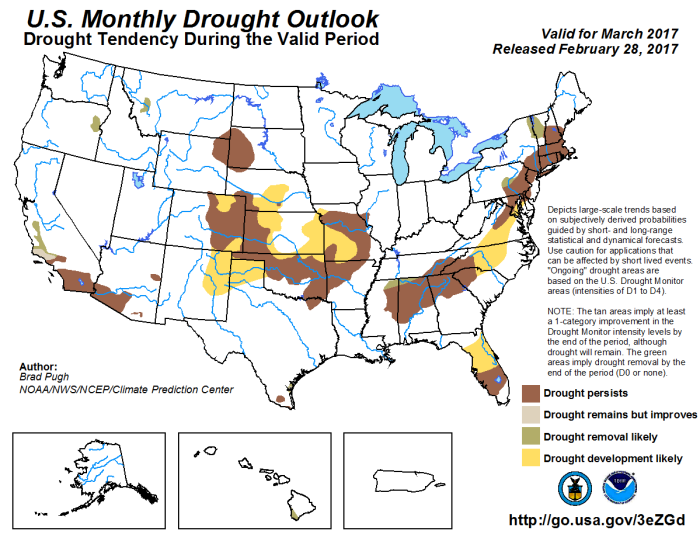
Drought outlook showing the Front Range of Colorado in drought
The wheel always come full circle. A quote from Shakespeare my mother used to say a lot…meaning that things change. Sometimes quickly, sometimes slowly, but usually a full 360 degrees at some point.
As I listened to public radio the other day, a scientist from California commented on the current snow pack levels in the Sierra Nevada near Lake Tahoe. With a buoyant tone, he reported current levels to be 180% of normal.
I knew the Sierra had been getting lots of snow and the coastal areas lots of rain, but hadn’t realized it had reached almost record levels. The reporter went on to say that most of northern California was not out of the nearly 5-year drought it had been suffering through. I recalled just three years ago, seeing pictures of barren ski slopes in March, and hearing of severe water restrictions, feeling a pang of sorrow for my friends who still lived there.
The wheel always comes full circle.
Now I’m afraid it’s our turn. The end of January, the snow pack picture was also looking quite rosy here in Colorado. After two months of steady snowfall, snow pack levels were above normal, skiing was good, and things looked optimistic for the coming spring months. But our wheel turned.
After weeks of dry weather and record high temperatures, things aren’t looking so good. I gaze upon the dropping waters of Barker Reservoir and the exposed stones, sticks and mud and it’s hard not to project. Project extended dry weather and risky wildfire conditions.
Because snow pack levels in the mountains determine a lot of future hardships or boon for mountain communities and cities all over the western United States.
Like California, which uses its snow melt to fill reservoirs and provide much needed water for cities and agriculture, the Rocky Mountains of Colorado also provide important water uses. The snow that melts from Rocky Mountain National Park goes downstream into the Colorado River to Lake Powell and through the Grand Canyon. Up to nine states will draw on its water for survival.
On a personal note, I see the dry, sun-baked ground surrounding our reservoirs, and flash forward to what this will mean in May and June, as we enter the height of wildfire season. Still suffering PTSD from last summer’s fire, I don’t want to live on the edge this spring. Memories of 2012, when it stopped snowing at the end of February course through my brain, and I don’t want to relive that. That year, major wildfires began in March and became more numerous and more destructive through June.
But if there’s anything we’ve learned from our 8 years here, it’s that every year, every winter is different in terms of when the snow falls. We’ve had 2 feet of snow fall as late as Mother’s Day. April has brought 20, 30 and even 40-inch snowfalls as well.
Maybe the wheel is still spinning for this winter, and it will spin all the way around into the storm cycle. For my sake and so many others who depend upon Colorado’s melting snow, I hope Mother Nature as one more spin…

